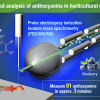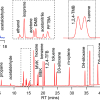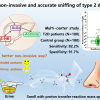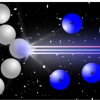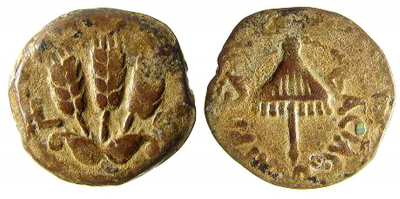
Elemental and isotope analysis of the metals in ancient artefacts such as the prutah shown here sometimes can pinpoint the places where the metal was mined. This can be combined with historical sources to determine when the coin was likely struck. Archaeologists can use the evidence to identify or narrow date ranges of historical significance.
Researchers from the National Institute of Standards and Technology (NIST), Colorado College and Mount Saint Mary’s University in Emmitsburg, MD, in the USA have shown that X-ray fluorescence and lead isotope analysis can be used to determine the elemental composition of ancient coins, even coins that generally have been considered too corroded for such methods. Along the way, the researchers’ analysis of coins minted in ancient Judea has raised new questions about who ruled the area while giving insight into trading patterns and industry in the region.
Elemental and isotope analysis of the metals in ancient artefacts sometimes can pinpoint the places where the metal was mined, because ores in a given region often have a unique composition. This can be combined with historical records of when mines in the area were operating to determine when the coin was likely struck. The results not only help date the coin, but also offer insight into trade and power relationships in the region. The work has been published in Applied Spectroscopy(doi: 10.1366/000370210791114211).
To compare the effectiveness of various non-destructive analytical methods with destructive methods often used to determine the age and origin of ancient coins, the group studied coins minted by Kings Herod Agrippa I and Agrippa II in what is modern day Palestine and Israel, a biblically and historically significant period.
The vast numbers of a particular coin, a prutah, found in the archaeological record has led scholars to disagree about when they were struck and by whom. The provenance of the coin is important because it is used to establish dates for places and events in the early years of Christianity and the onset of the Jewish War (66–70 AD) against the Romans and the Diaspora that followed.
To better establish whether the coins were minted by Agrippa I (41–45 AD) or Agrippa II (after 61 AD), the team performed X-ray fluorescence and lead isotope analysis to fingerprint the ores used in the production of the coins. These methods are not commonly used on corroded coins because the corrosion can affect the results—in some cases making it difficult to get a result at all. The team showed that these problems could be overcome using polarising optics and powerful new software for X-ray fluorescence analysis, combined with careful calibration of the mass spectrometer using Standard Reference Materials from NIST (NIST’s Common Lead Standard Reference Material, SRM 981, and Neodymium Standard Solution, SRM 3135a).
The lead isotope analysis, performed at NIST, showed that the coins that had been attributed to Agrippa I were indeed from that era. More interestingly, however, the group found that the copper from which the coins were made most likely came from mines that scholars thought hadn’t been opened until a century later.
To follow up on their research, the group is planning to perform more tests to determine if the mines in question may have been operating even earlier than their recent findings suggest.






